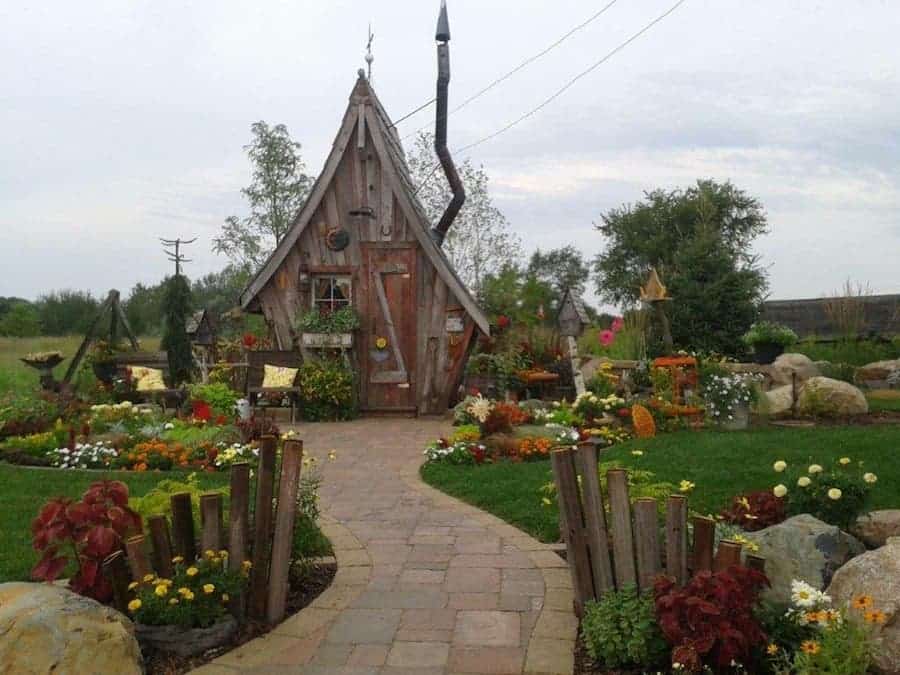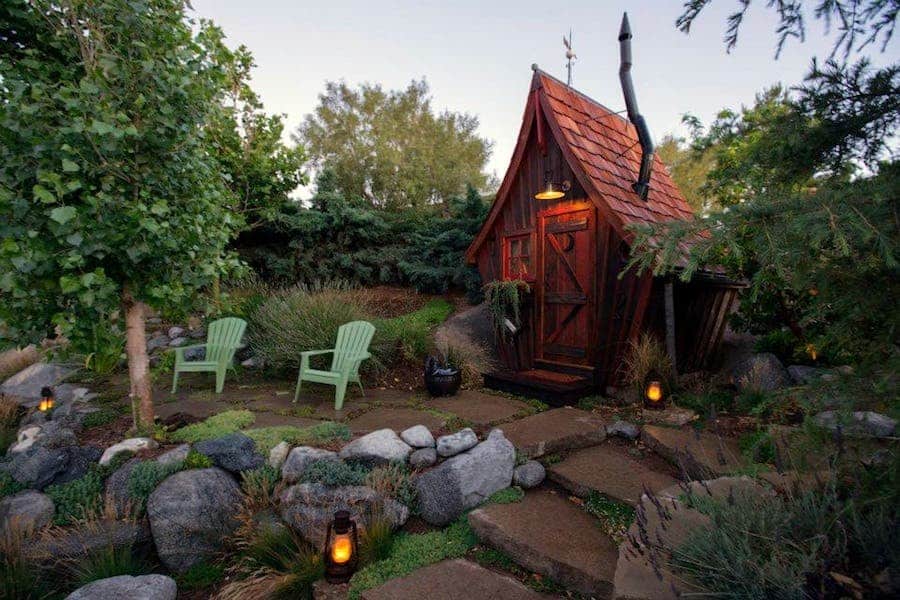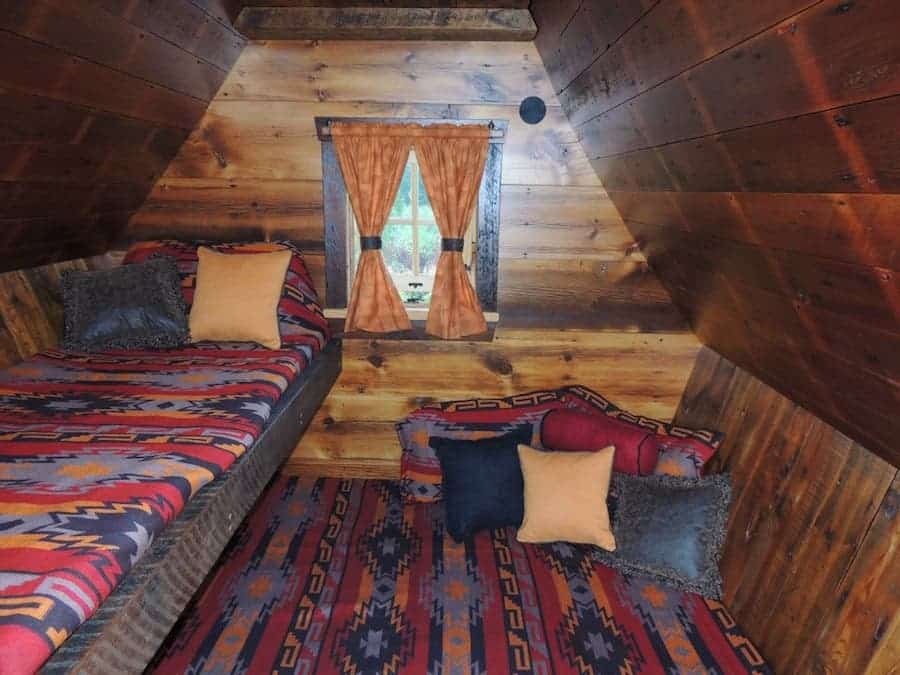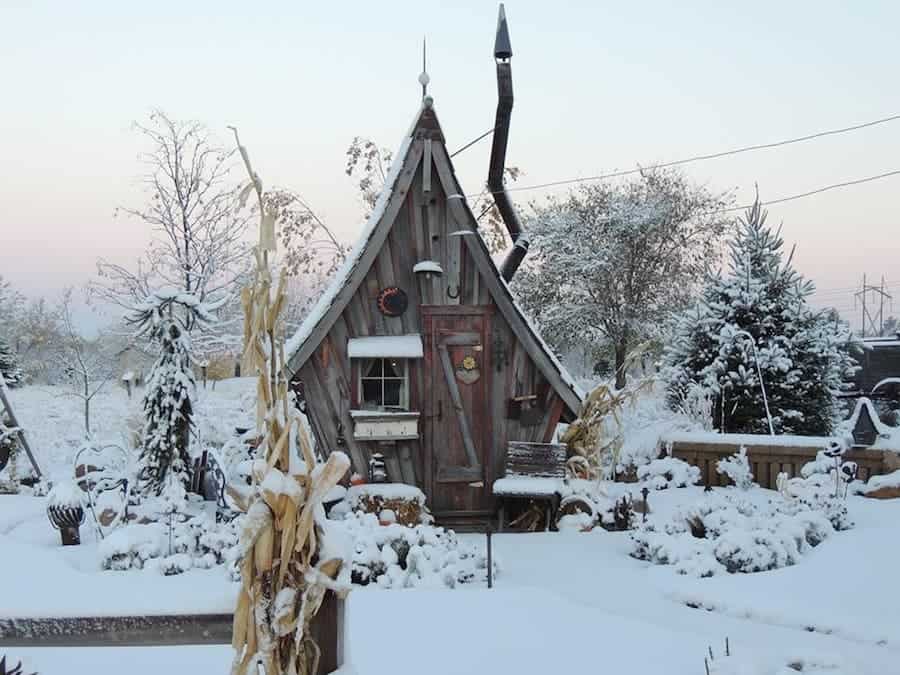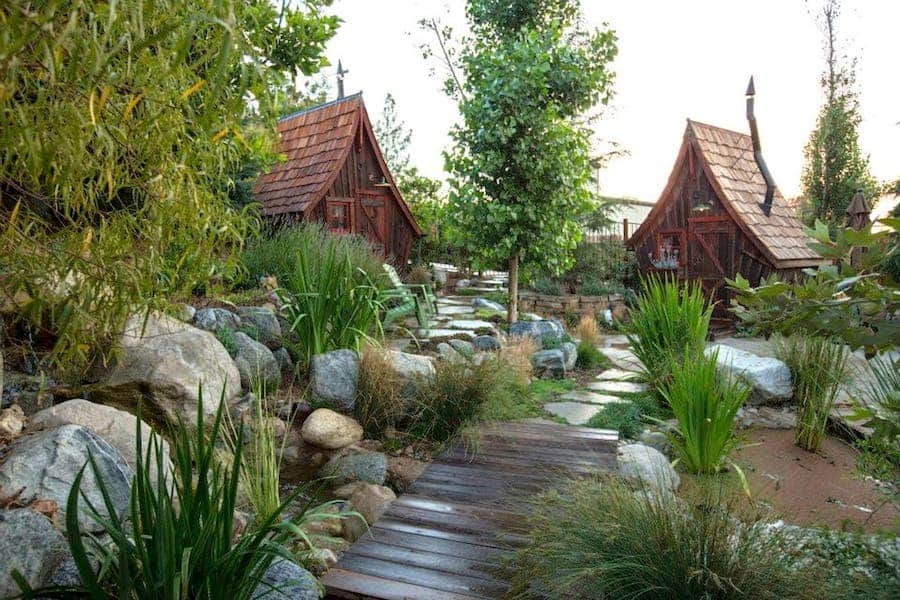Dan Pauly is a rare type of artist; he builds guest cottages, playhouses, garden sheds, and saunas – all of which look as taken from an enchanted forest. The odd shaped asymmetrical buildings usually feature an elongated crooked chimney, a slanted roof, and a charming porch and garden. To make things even better, everything is built from reclaimed wood.
“This wood reflects our natural heritage,” Dan observes, “and has a much richer and more attractive patina and grain than modern wood.”
All the buildings can be insulated, they come standard with an inside and an outside light. Two double outlets are also included in each building; the windows can open, and all houses feature a chimney and a foundation. The houses are also more spacious than they look from outside, and the inside is cozy and rustic.
Dan comes from a rich family, and the tradition of building this type of houses goes back for 4 generations.
“As I uncover an old barn or shed,” Pauly says, “I realize that it could be the same lumber that my great-grandfather used more than 100 years ago. I think that respect for the craftsmen and craftswomen of the past, and for the wood they used, make a difference in each new piece I create.”
There is no fixed price for this, but it can be built and shipped from trailer to final resting place. During transport the buildings are laid down on there side on a flatbed trailer, to allow for overpasses. All in all, if you want one, you can get one; and although it won’t come cheap, having a fairytale house is definitely worth it.
You can see more of Pauly’s cabins on The Rustic Way’s Facebook page.
